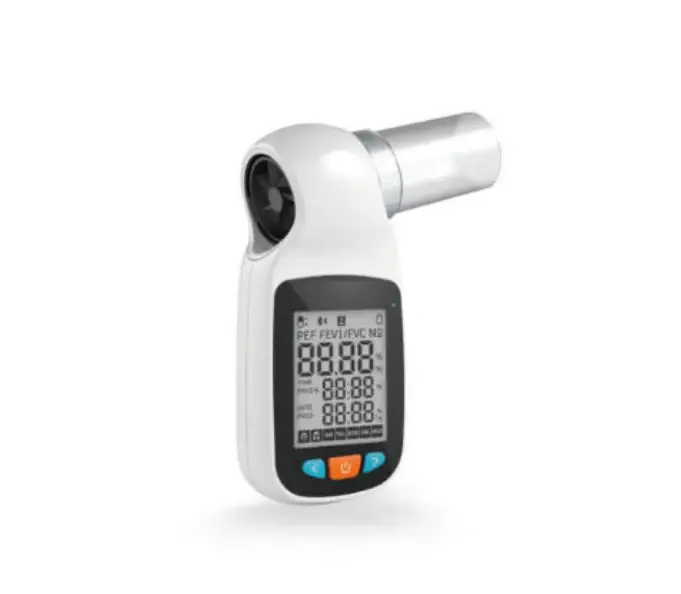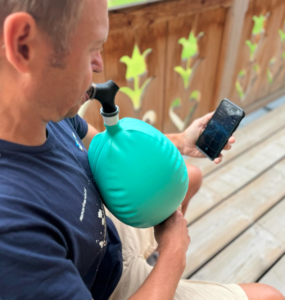By: Dr. Andrew Sellars

There are a whole range of athletes to coach with the primary goal of improving performance. As the lungs and the muscles of respiration both play a large role in the success of all athletes, respiratory training should be a part of the training picture. Spirometry is the measurement of lung volumes and airflow, to help assess a person’s ability to move air during forced inhalation and exhalation. A simple and portable spirometer can be used for two main purposes in the sports realm: 1) to identify specific respiratory limitations and 2) demonstrate positive progress over time. The goal is to educate your athlete on the need for this type of training, then continue to motivate them by showing consistent improvement over time due to their training efforts. Respiratory information and training can benefit your athletes in competition and surprisingly also improve physical and mental health once an individual learns to understand and control their own breathing. Respiratory training is an incredibly empowering process!
A spirometer is a measuring device connected to a tube through which the client attempts a maximal breath in, followed by a maximal forced breath out. In the medical field, spirometry is conducted in a lab setting by Respiratory Therapists to help diagnose a number of chronic lung conditions, like asthma, chronic obstructive pulmonary disease (COPD), and pulmonary fibrosis. In the sports setting, there are a number of inexpensive and portable devices that can be used to give similar results.
The most commonly used results from a spirometer, are Forced Vital Capacity (FVC) and Forced Expiratory Volume (FEV).
FVC is a metric that closely approximates Total Lung Capacity (TLC), which is the maximum amount of air that any person can forcefully exhale in a single breath. With some portable units, this value is replaced by FEV6, or the total amount of air moved over 6 seconds of forceful exhalation. Again, this is another approximation for TLC, and these values are often used interchangeably.
The first reason to measure FVC for athletes, is to help assess whether there is a structural or functional limitation in this parameter, and allow for appropriate training recommendations to improve volumes. There are normative tables that provide a good indication of what normal lung volumes are for both men and women, based on height and age. Smaller than expected lung volumes can be attributed to a number of factors, including; the ability of the ribs to pivot at their attachment points to the spine (intercostal mobility), the ability to incorporate effective diaphragm contraction, and the coordination of the accessory muscles of both inspiration and expiration.
The second reason to measure FVC, is to track progress over time. We have consistently shown significant improvements in FVC with focused work using the Breathe Way Better (BWB) system. These changes can lead to improved performance and can be seen if regularly tracking FVC with a spirometer.
Measuring FEV1, which is the amount of air moved during the first second of exhalation, gives an indication of how quickly the air can be moved, and an indication of potential limitations that may occur under the high demands of exercise. A reduced FEV1 could be a result of airflow obstruction, as seen in asthma and COPD, but can also be due to a functional limiter like muscle strength or coordination. A poor FEV1 responds very well to focused coordination and power work when using the BWB device during a structured training program.
In conclusions, spirometry is a very simple tool to both assess and track changes over time for both the structural and functional aspects of the respiratory system.
Here is video from VO2 Master talking about the importance of measuring respiratory performance. CLICK HERE


